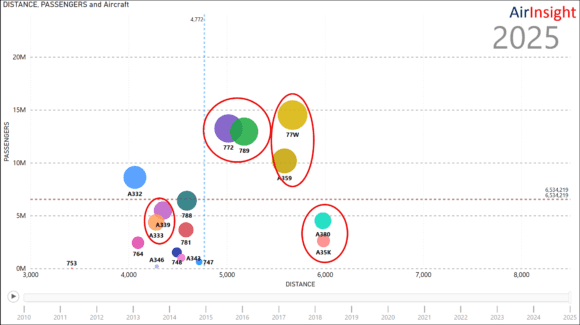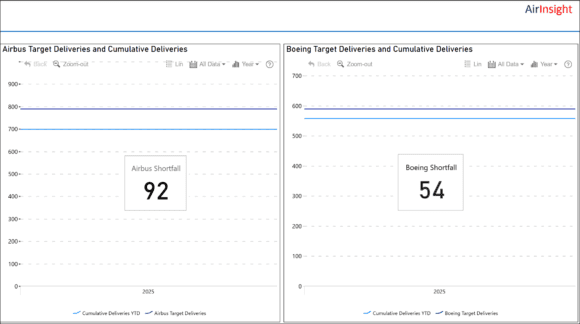Just when we thought the spate of Boeing 737 news last week was over, several new items broke over the weekend, none of them positive for Boeing. The saga is becoming tiresome.
The MCAS on the MAX lacked the safeguards of the MCAS on the KC-46 Tanker. The story that broke in the Wall St. Journal over the weekend indicates that the MCAS system installed on the KC-46 tanker was substantially more robust than the version installed on the MAX. For the tanker, the system relied on multiple sensors, was limited in how much it could move the tankers nose, and was easier for pilots to override.
Perhaps the good news from the story is that an MCAS system, like that installed on the KC-46 does work and can provide the slight corrective actions needed, rather than repeated drastic corrections that occurred on the 737 MAX. But the fact that Boeing delivered a system omitting those safeguards for the MAX is troubling, both in terms of the rushed nature of the project but also in FAA oversight. Boeing clearly dropped the ball, but there was nobody there to pounce on the fumble.
The MAX problems stem from the MCAS system, which, given knowledge that the KC-46 system works well, indicates a problem in software development. Boeing knew the right way to design the system, but apparently took a more expedient route. The probability that Boeing is help culpable for the two MAX accidents in lawsuits appears to be steadily rising.
Stress cracks were found prematurely in 737NG pickle forks that connect wing to fuselage.
The FAA has ordered inspections of the prior generation 737NG models that currently are in service. The discovery of stress cracks in a part designed to last 90,000 hours early in its life, about 26,000 hours, is a concern for Boeing as a premature replacement of these components could be quite costly in aircraft downtime.
A “pickle fork” is utilized to join the wing to the core structure of the fuselage, and is a part intended to last more than 90,000 take-offs and landings. Boeing discovered premature cracking in pickle forks of several aircraft, resulting in the FAA and international agencies mandating further inspections.
It goes without saying that premature cracking in a part that holds the wing and fuselage together is critical to structural stability and represents a potential catastrophic risk should it fail. While none have failed, the premature cracking will result in additional inspections at minimum, and replacement in the worst case.
Under normal circumstances, this story would have been buried, but since the 737NG was the predecessor to the MAX and handling the narrow-body flight load for a number of Boeing customers like Southwest, the timing of the discovery couldn’t be worse. While there does not appear to be any immediate danger, additional inspections do cost time and money and can be disruptive to schedules if not completed during overnight stops.
FlyDubai says Boeing grounding has set it back 5 years. The Dubai-based carrier indicated that the unavailability of the MAX has curtailed its operations to 2014 levels, and that it is considering the Airbus A321.
A loss of a customer to the A321 would be a major blow to Boeing, particularly the MAX 10 that has been outsold by the A321 by a 4:1 margin. With several key customers now considering the A321, it appears Airbus has become more aggressive in going after disgruntled MAX customers. The argument that betting the future of an airline on one company is risky, and some of the Boeing LCC customers are listening very hard to Airbus arguments.
With the A321neo models substantially better than the MAX 10 in capacity, range, and economics, the A321 is a compelling step-up from the MAX 8 and a potential risk reduction strategy for an airline. For Airbus and Boeing, a customer jumping ship is a game changer, as these decisions impact follow-up orders for two decades.
Fly Dubai mentioning a potential switch from Boeing to Airbus could either be a negotiating ploy for additional economic damages from Boeing, or a frustrated airline that still has no firm date when its fleet will return and must take action to protect its future. The longer the MAX re-certification process takes, the more likely airlines will switch horses.
Views: 19




